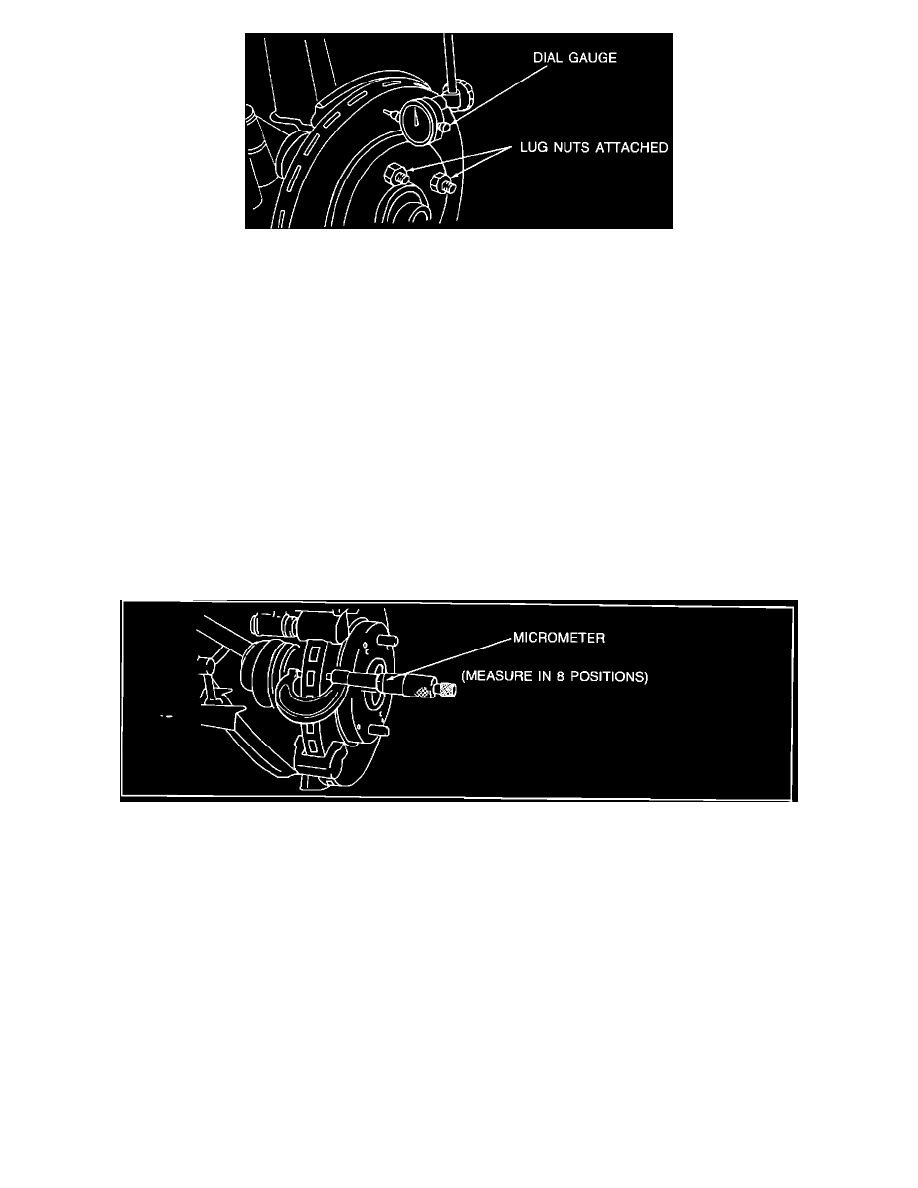Galant VR4 AWD L4-1997cc 2.0L DOHC Turbo (1992)

3.
Position a dial gauge approximately 5 mm (0.2 in.) from the outer edge of the rotor, zero the gauge, and measure the run-out. Refer to the
appropriate service manual for allowable run-out specifications.
NOTE:
Use the wheel lug nuts to secure the rotor to the wheel hub.
4.
If the rotor run-out equals or exceeds allowable specifications, change the phase of the rotor and hub.
To change the phase of the rotor and hub, remove the rotor, rotate it one or two studs from its initial position, and re-install it on the hub. Further
instructions on changing the phase can be found in Group 35 of the appropriate service manual.
5.
Re-check the rotor run-out. If it is still more than the allowable limit, resurface the rotor using an on-the-car brake lathe.
NOTE:
If an on-the-car brake lathe is not available, use an off-the-car lathe. Replace the brake rotor ONLY if neither type of brake lathe is available or if
resurfacing would make the rotor thinner than minimum thickness specifications.
Regardless of the brand or type of brake lathe used, follow the lathe manufacturer's instructions exactly.
BRAKE ROTOR THICKNESS VARIATIONS
1.
With the brake caliper removed and secured out of the way with a wire hook, measure the thickness of the brake rotor at 8 different positions using
a micrometer. Each measuring position should be 45 degrees apart and 10 mm (0.39 in.) from the outer edge of the rotor. Refer to the appropriate
service manual for the standard value thickness and the limit.
NOTE:
The thickness variation between any two measurement positions must not exceed 0.015 mm (0.0006 in.).
2.
If the thickness variation is exceeded, resurface the rotor using an on-the-car brake lathe.
NOTE:
If an on-the-car brake lathe is not available, use an off-the-car lathe. Replace the brake rotor ONLY if neither type of brake lathe is available or if
resurfacing would make the rotor thinner than minimum thickness specifications.
Regardless of the brand or type of brake lathe used, follow the lathe manufacturer's instructions exactly.
WARRANTY INFORMATION
The 8-digit operation number shown in the chart below DOES NOT apply when an offthe-car brake lathe is used or when rear disc brake rotors are
machined. The operation number applies ONLY when an on-the-car brake lathe is used to machine FRONT brake rotors.
